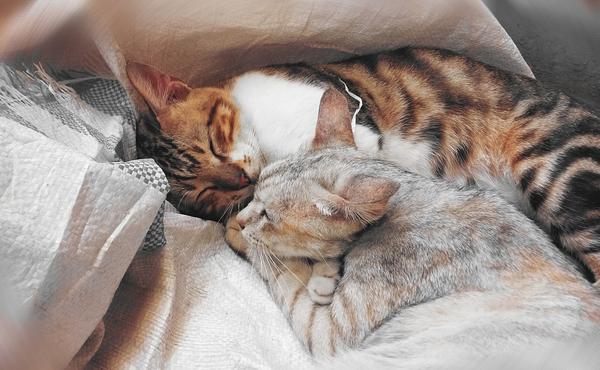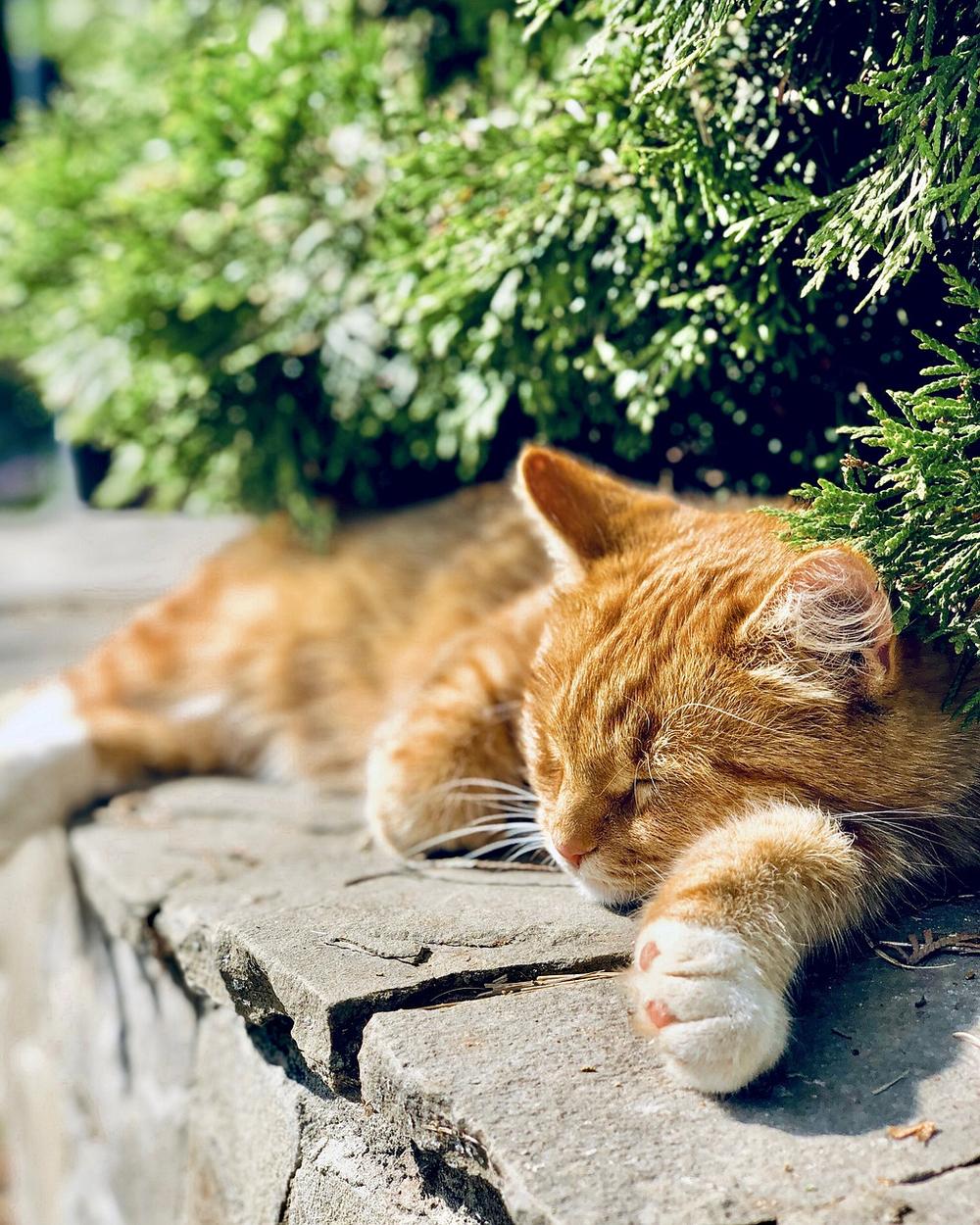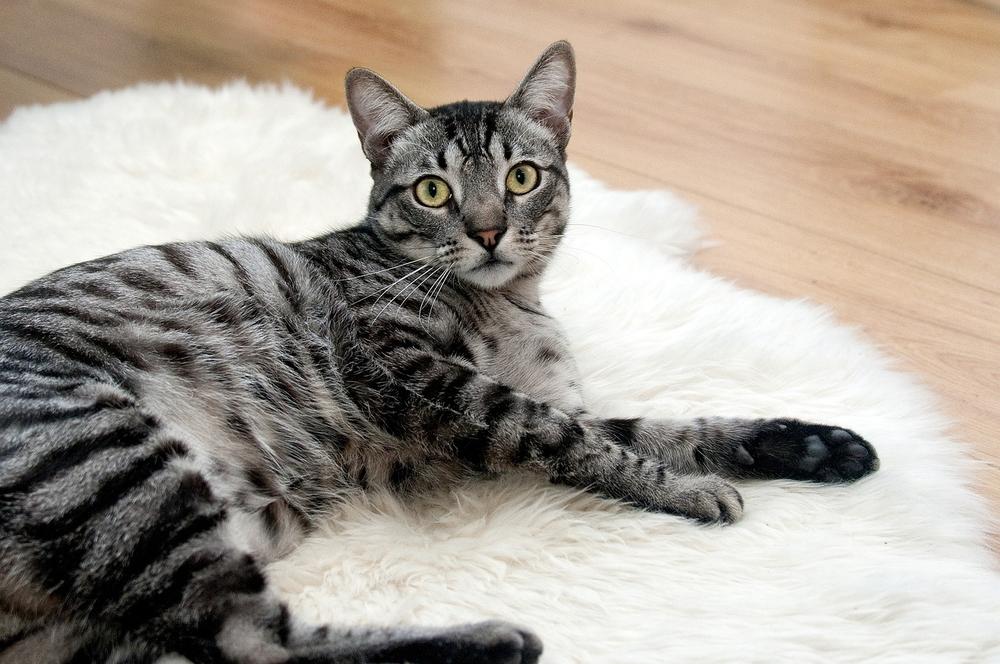Why Do Cats Loaf?

Ever wondered why cats loaf?
Why do they curl up into those adorable bread-shaped balls? 😺
It's like their own personal yoga pose.
Some people find it irresistibly cute, while others can't help but feel perplexed.
Well, hold onto your whiskers because we're about to unravel the mystery.
Whether you're a feline aficionado or just mildly intrigued by our furry friends' eccentric behavior, this blog post is for you.
So, let's dive into the world of loafing cats and unveil the secrets they hold.
Ready to be enlightened?
Let's begin.
The Meaning Behind Cat Loafing
Cat loafing is an evolutionary adaptation where cats curl up in a loaf shape to protect their organs and stay warm. It signifies their comfort and happiness in your presence, while also conserving energy and remaining alert to potential threats. Cherish these moments as they show your cat's sense of security with you.
Evolutionary adaptation can teach us about cats' preference for sitting in the loaf position.
In the wild, cats would curl up into a loaf shape to protect their organs and stay warm while staying alert - a smart move, indeed.
When a cat sits in the loaf position, it indicates that they feel comfortable and at ease in your presence. It's their way of saying they're happy being with you.
Loafing not only shows their happiness but also helps them conserve energy and stay cozy.
Talk about multitasking!
Despite appearing relaxed, cats aren't oblivious to their surroundings when loafing. They remain vigilant for any potential threats and are prepared to react if necessary.

Loafing strikes an impressive balance between relaxation and alertness.
This behavior is particularly beneficial for cats with shorter fur or lacking extra insulation as it helps them retain heat.
Loafing is their secret weapon against chilly temperatures.
The term "cat loaf" came into popular use in 1999 and gained even more popularity as an internet meme in the 2010s.
Cat memes are everywhere, after all.
In essence, when your cat decides to loaf around, it shows their relaxation, trust, and most importantly, their sense of security with you.
Cherish those loaf moments, my friends.
That's catspeak for "I love being with you!
Main points I'll expand upon further down this article:
- Cats loaf by curling up in a rectangular shape with tucked paws.
- Loafing helps cats stay warm and conserve body heat.
- There are different types of cat loaf positions, such as face loaf and Sphynx loaf.
- Loafing is a neutral position that protects vulnerable organs.
- Cats may loaf in different positions based on mood and preferences.
- Loafing helps cats maintain a comfortable body temperature during sleep.
- Understanding the unique needs and behaviors of loafing cats is important.
- Loafing indicates a desire for warmth and uninterrupted rest.
- Maintaining an ideal environmental temperature is crucial for cat comfort.
- Loafing can be a sign of illness or discomfort, so monitoring for changes is important.
What Is a Cat Loaf?
Anatomy and movement are key for cats' loaf position.
Cats can adopt a rectangular shape resembling bread because of their unique anatomy.

Their flexible spines let them tuck legs under their bodies, while detachable shoulder blades add flexibility.
They also retract claws, further enhancing their comfort in this position.
Paws tucked in, tail wrapped around, cats create a cozy and compact loafer.
Understanding Different Types of Cat Loafs
Here's a list that'll help you understand all the different cat loaf styles:
- Full loaf: A cat sits with all four paws neatly tucked beneath its body.
- Partial loaf: A cat sits with only its back paws tucked under.
- Partial loaf with one extended elbow: Similar to a partial loaf, but with one front leg slightly stretched out.
- Loaf boat: This is when a cat sits in a loaf shape on top of something, like a box or cushion.
- Face loaf: When a cat rests its head on its paws while loafing, it means they're relaxed and content.
- Cheek bed loaf: If a cat lays its head on its own cheeks while loafing, it's showing an extra level of comfort.
- Headband loaf: The cat extends its paws forward, looking like a headband across its body.
- Loaf with tucked paw: When a cat sits in a loaf position with one paw tucked under its body.
- Unfurled tail loaf: A cat sitting in a loaf position with its tail unfurled behind it.
Knowing these different loaf styles can help you figure out how your cat feels and how comfortable they are. 😺

And now, let me delve deeper into why understanding a loafing cat's behaviors and needs is crucial for their well-being - because appreciating these moments goes hand-in-hand with being a responsible and caring cat owner...
Tips for Dealing With a Loafing Cat
When it comes to a lazy cat, you gotta remember a few things to ensure they're comfy and happy:
- Respect their personal space, dude. Let 'em loaf in peace. It's their time to chillax, so give 'em the tranquility they crave.
- Make sure the room temperature is cozy, around 70 degrees Fahrenheit. Cats run hotter than us humans, so keeping 'em warm is key for their wellbeing.
- Kick back and enjoy watchin' your cat loaf. These moments of pure relaxation mean they feel safe and content in their surroundings.
- Stay nearby as a chill companion, but still give 'em their breathing room. Be there for 'em without cramping their loafing style.
- Remember, cats spend like two-thirds of their lives snoozing, man. So their loafing time is hella important for their health and energy levels.
- Keep their loafing spot snug and comfy to keep their body heat on point. Even a tiny change in temperature can mess with their survival game.
- Learn to recognize the difference between regular resting positions and loafing. If their face is buried into somethin', it might mean they want warmth and deeper rest.
By applying these suggestions, you'll establish the ultimate serene area for your indolent feline friend.
When Should You Be Concerned About Your Cat Loafing?
Monitoring behavioral changes is key
When it comes to cats loafing, you need to keep an eye out for any changes in their behavior. Cats are usually independent, but if you notice anything unusual, it might be a cause for concern.
Signs that require veterinary attention
Certain behaviors in cats can indicate that there may be underlying health problems that need to be addressed.
For example, if your cat has cold ears or tail, they might be feeling chilly and uncomfortable.
If they experience muscle tremors, skin rippling, panting, pinned ears, dilated pupils, or an arched back, these could all be signs that something might be wrong, and it would be wise to reach out to a vet.
Loafing as a sign of sickness or pain
You see, cats tend to loaf when they want to protect themselves against predators.
So, if your cat is constantly loafing, it could mean that they are not feeling well or have some sort of injury.
If you notice your furry friend having difficulty tucking their paws under their body or always curling up tightly on the floor, it could be a sign of pain.
Keep an eye out for other signs of discomfort such as a lowered head, tightly closed eyes, trembling, shaking, changes in eating, sleeping, or activity.
If you observe any of these behaviors, it’s time to schedule an appointment with the vet.
And by the way, don't forget about face loafing!
Sometimes, it simply means that your cat is sleepy or feeling a bit sick.
However, if your cat starts randomly loafing on uncomfortable surfaces (and let's admit it, cats usually love being comfortable), it could be a sign that something isn’t quite right.
Especially because cats are typically more active during the day.
Oh, and one more thing:
Cats with heart, lung, abdominal pain, or underlying medical issues?
They might also display loafing behavior.
And while we're talking about understanding our feline friends, I want to tell you about something fascinating.
You see, cats can be quite mysterious creatures, and one behavior that often leaves owners curious is why they purr when they see us.
If you're as intrigued as I am and want to know the reasons behind this adorable habit, I invite you to check out my blog post, Why Does My Cat Purr When He Sees Me.
In this article, I explore the secrets behind this heartwarming behavior and shed some light on what it means when your cat expresses their affection through purring.
And that wraps up today's article.
If you wish to read more of my useful articles, I recommend you check out some of these: Why Does My Cat Watch Me Shower, Why Do Cats Sleep With Their Head Upside Down, Why Does My Cat Sound Like a Pigeon, Why Does My Cat Play in the Litter Box, and Cat Sleeping Next to a Litter Box
Talk soon,
-Sarah Davis